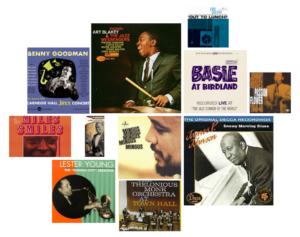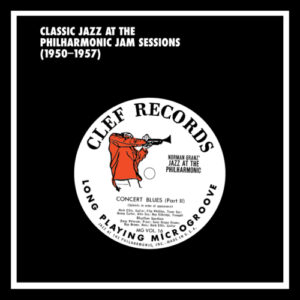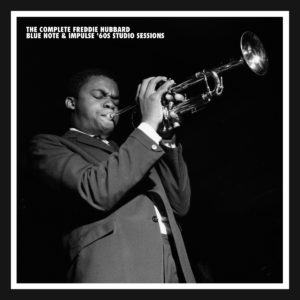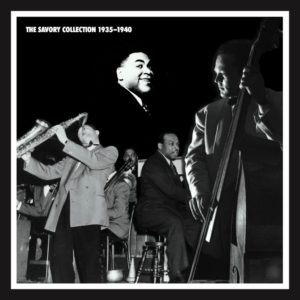
Best Jazz Albums
1950s Classic Jazz
Horace Silver: Six Pieces Of Silver
In mid 1956, the Jazz Messengers broke up as a co-operative group. Art Blakey inherited the name and Horace Silver recruited the sidemen in his quintet. This album was just a studio get-together with Hank Mobley, Donald Byrd, Doug Watkins and drummer Louis Hayes until the unexpected radio success of the Latin-tinged “Senor Blues” drafted Silver into being a working bandleader. With six originals including “Cool Eyes” and one standard, meticulously arranged and performed, Horace became a major voice in modern jazz.
Featured Track: Senor Blues
From its forceful piano and drums intro to the funky ensemble melody, this one of the most captivating fusions of jazz and Latin music. Donald Byrd and Hank Mobley glide over the rhythm with a hipster’s ease. After a short “shout” chorus which became a Silver trademark, Horace locks up with Watkins and Hayes for a penetrating Latin-tinged solo.
John Coltrane: Blue Train
In 1956, the sublime quartet of John Coltrane, Kenny Drew, Paul Chambers and Philly Joe Jones recorded “Chamber’s Music” for a small West Coast label. A year later with Lee Morgan and Curtis Fuller added, Coltrane recorded his first great masterpiece. His compositions, “Blue Train,” “Moment’s Notice” and “Lazy Bird” have become jazz standards and this is one of the best jazz albums of all time. The superbly executed and blended ensembles have a haunting quality and each solo is a memorable treasure.
Featured Track: Blue Train
The title tune, “Blue Train’” is 10 minutes and 44 seconds of pure magic. This blues is built on a somber five-note melody. Coltrane is first out of the gate with a breath-taking, seamless scalular solo that foreshadows his “Giant Steps.” The 18-year-old Lee Morgan follows with the same approach, no mean feet for a trumpeter. The solos of Curtis Fuller, Kenny Drew and Paul Chambers mine the tune for its bluesy character.
Miles Davis – Milestones
On February 4, 1958, Miles Davis added Cannonball Adderley to his quintet (John Coltrane, Red Garland, Paul Chambers and Philly Joe Jones) to produce one of his greatest albums. The band tore through jazz classics like John Lewis’s “Two Bass Hit” and Monk’s “Straight No Chaser” and more recent blues like Jackie McLean’s “Dr. Jackle” and “Sid’s Ahead.” The tune “Milestones,” was the trumpeter’s first piece to explore modal playing.
Featured Track: Milestones
The 40-bar tune “Milestones” altered the course of jazz by directly addressing modality as an alternative to conventional chord sequences. Cannonball Adderley’s solo balances his prodigious technique with fresh ideas. Miles’s solo is more relaxed and lyrical. Coltrane’s dazzling solo shows real affinity for this kind of structure. This excellent performance paved the way for “Kind Of Blue” a year later. It would remain in Miles’s repertoire for more than a dozen years.
Sonny Rollins: Saxophone Colossus
Though Rollins was already considered a promising and important tenor player, this 1956 landmark recording with Tommy Flanagan, Doug Watkins and Max Roach assured his place in history. His mature and virtuosic explorations of “Moritat” (“Mack The Knife”) and “You Don’t Know What Love Is,” his roaring West Indian signature piece “St. Thomas,” “Strode Rode” and “Blue Seven” all achieve near perfection.
Featured Track: St. Thomas
Sonny Rollins’s “St. Thomas” uses an infectious West Indian melody and rhythm. Rollins builds his solo carefully with fragments of the melody moving into his compelling exploration of the piece. The solos of Max Roach and Rollins (his second) are simultaneously graceful and forceful.
Art Blakey: Moanin’
Art Blakey introduced the great edition of the Jazz Messengers with Benny Golson, Lee Morgan, Bobby Timmons and Jymie Merritt on this, one his best jazz albums. The band was cohesive and loaded with great material. Bobby Timmons’s “Moanin'” and Benny Golson’s “Along Came Betty” and “Blues March” were tunes so powerful that Blakey played them almost every night for the next 30 years. This beautifully performed and recorded session made the Jazz Messengers a jazz institution and put Golson, Timmons and Morgan to the forefront of jazz. Blakey set a hi8gh standard with this album.
Featured Track: Moanin’
“Moanin’” basically has an eight-note followed with the ‘ahem’ gospel cadence and a roaring bridge. The piano plays the melody and the horns play the ahem. When the A section is repeated, the horns and piano reverse roles, establishing a groove and building anticipation before the explosive bridge. This was the first of Bobby Timmons’s gospel-tinged jazz music hits. Lee Morgan’s solo has a great opening lick that is handed off to Golson for his. Funky piano and bass statements follow. Blakey shapes every note of this incredible performance.
Charles Mingus: The Clown
This incandescent, adventurous session introduced Mingus’s most exciting and adventurous band to date. Wade Legge, Mingus and Dannie Richmond are constantly driving trombonist Jimmy Knepper and saxophonist Shafi Hadi to the edge was one of Mingus’s greatest. It introduced two classics “Haitian Fight Song” and “Reincarnation Of A Lovebird.” Radio commentator Jean Shepherd tells the story of The Clown with spontaneous improvisations from the quintet. Two tunes (“Tonight At Noon” and “Passions Of A Woman Loved” from this session were issued later on and they are every bit as good as the music that made the first cut.
Featured Track: Haitian Fight Song
“Haitian Fight Song” is a multi-section composition with an urgent, aggressive main theme. Mingus and Dannie Richmond are unrelentingly swinging throughout. Jimmy Knepper, Wade Legge, Shafi Hadi and Mingus turn in powerful solos. This 12-minute excursion is a perfect representation all the elements of Mingus’s music.
Art Blakey: A Night At Birdland
The style that came to be known as hard bop was still taking shape when Blakey’s quintet appeared at Birdland. It origins could be clearly detected, however, in the small band sessions Miles Davis had led on Blue Note and Prestige, and some of the best of these (with Jackie McLean and Sonny Rollins on Prestige in 1951, with J.J. Johnson and Jimmy Heath on Blue Note in 1953) were galvanized by the drumming of Art Blakey.
Featured Track: Quicksilver
This quintet (Clifford Brown, Lou Donaldson, Horace Silver, Curly Russell and Art Blakey) was unstoppable. This version of “Quicksilver,” the first of many Horace Silver compositions to become a jazz music standard, is a case in point. They mix the virtuoso velocity of be-bop with bluesy, earthy attitude and phraseology. Donaldson and Silver bookend Brownie in the solo sequence. While their solos are spirited, playful and funky, it’s Clifford who take the prize on this one with a crisp, beautiful tone, great technique and fresh ideas aplenty pouring out of his horn.


















